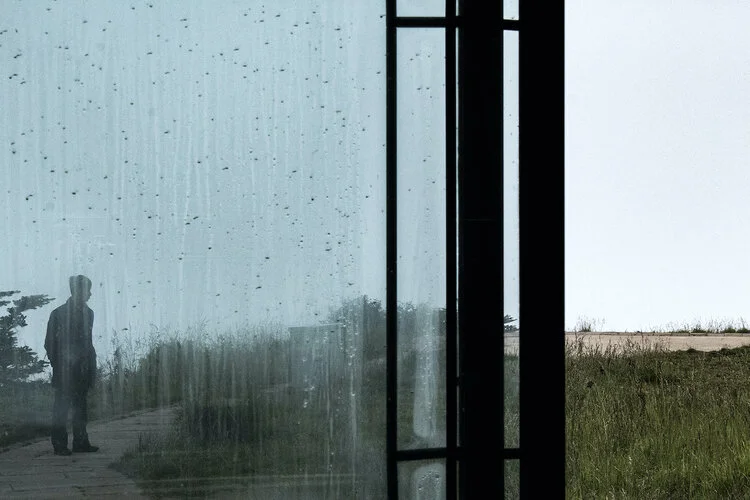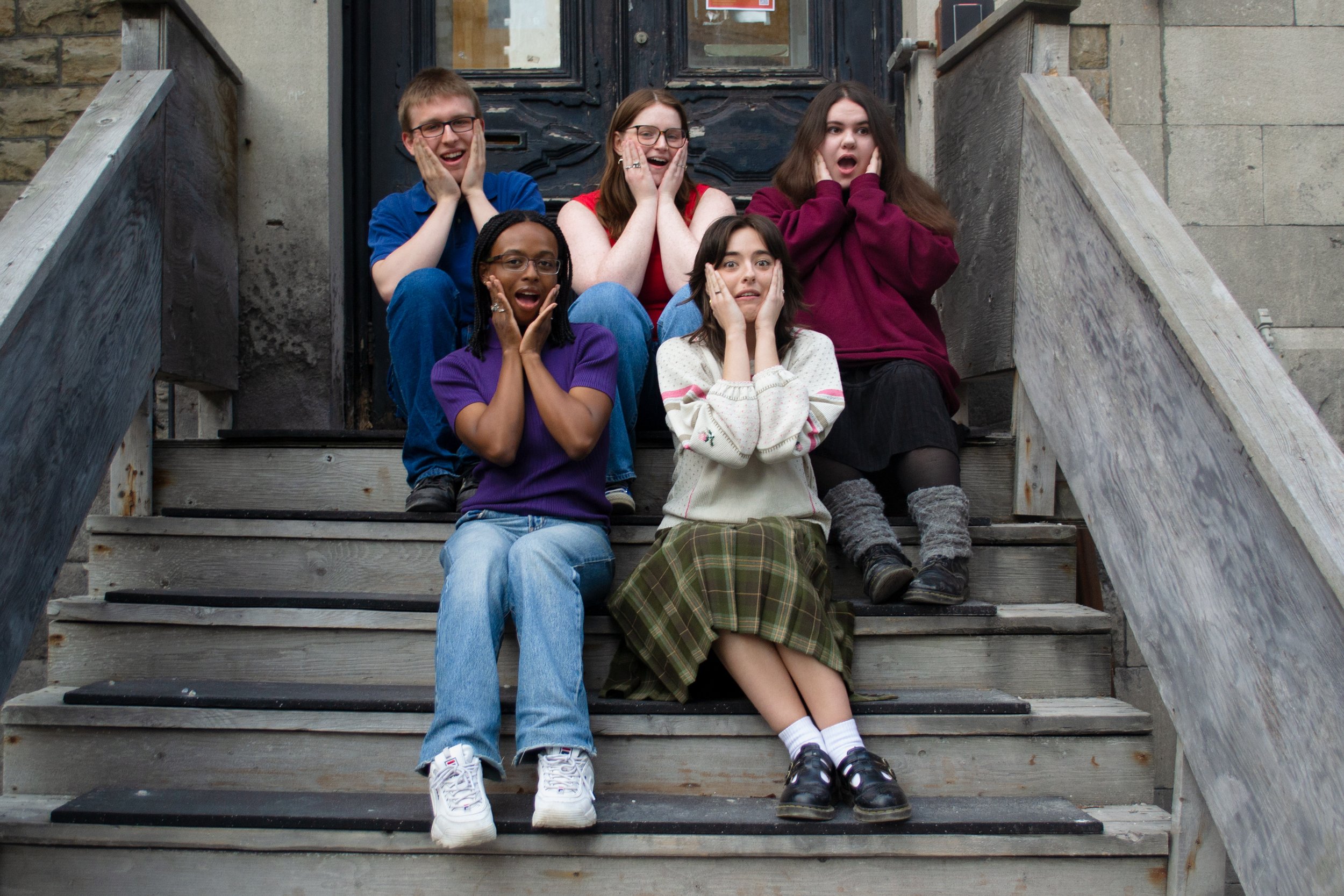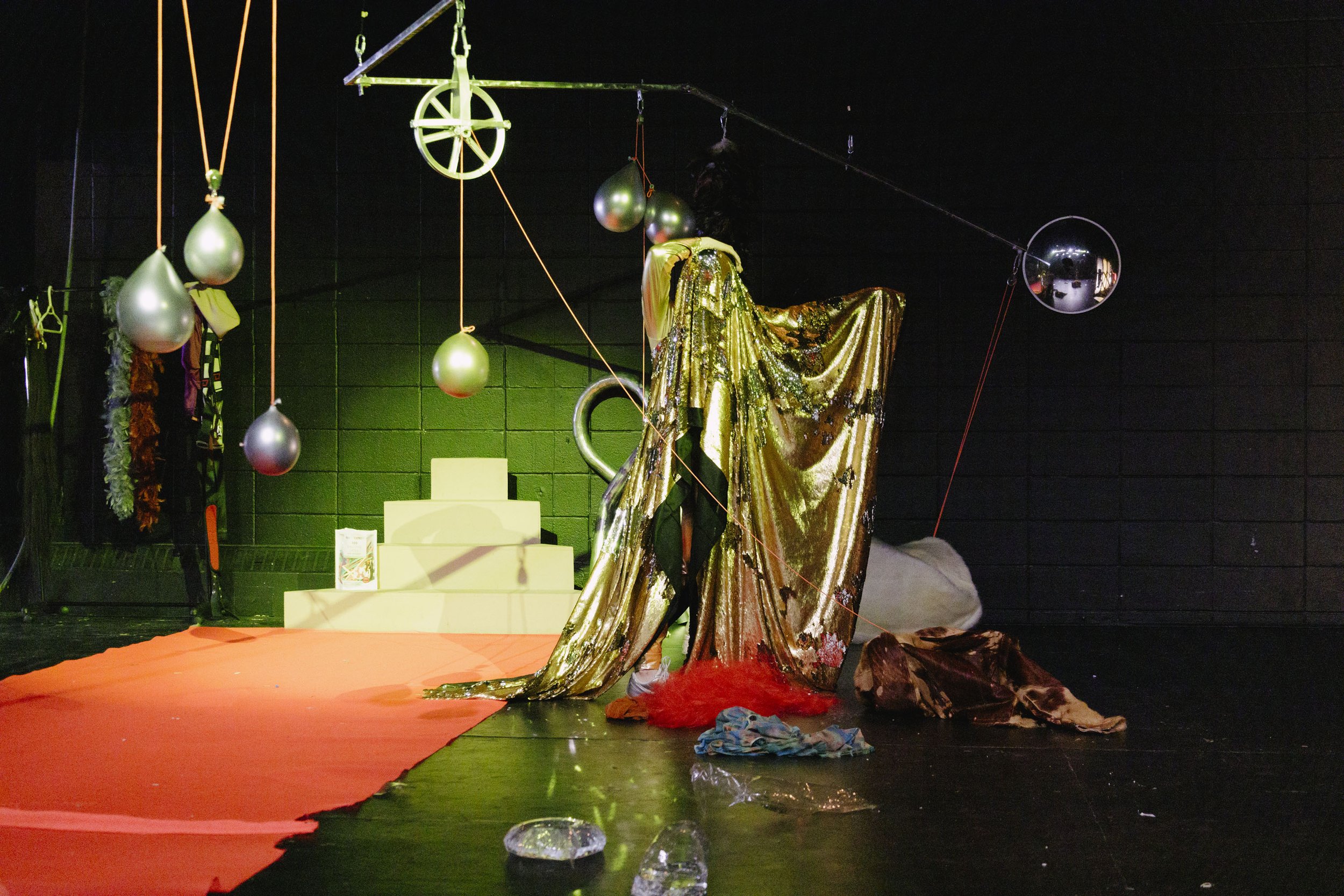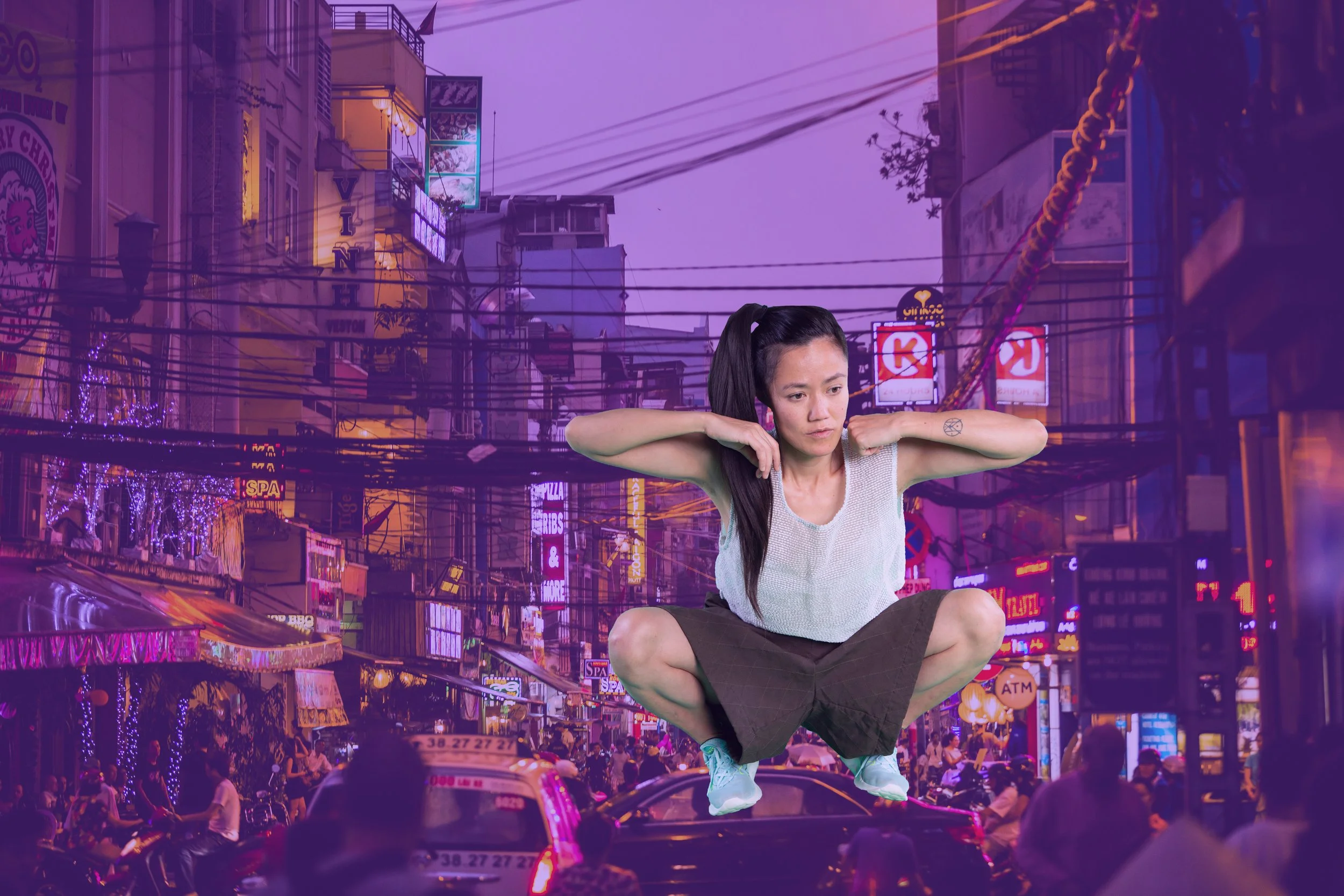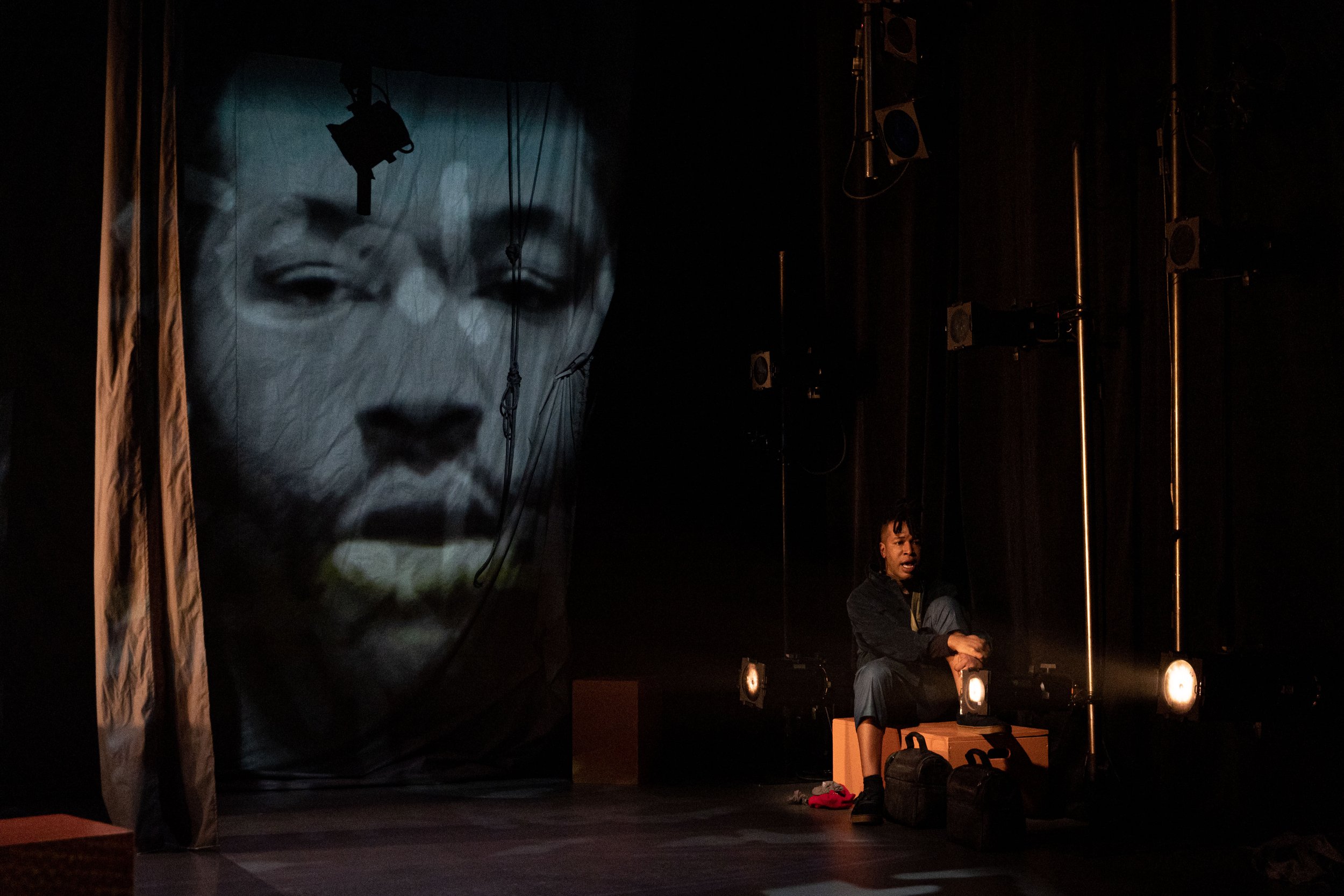Artist Spotlight: Henry Hu
whitesink by Henry Hu (inkjet print on cotton rag 24 x 16 cm) from passing parade, 2019 (10/10)
How do you decide to go from civil engineering to making a career for yourself as a visual artist? How do you know when it’s the right time to trust your intuition, and make that major life change that you need? For Henry Hu, these kinds of decisions have shaped his journey to becoming a full-time visual artist.
Exercising through various mediums, Henry Hu's (born 1995 Hong Kong) emerging practice commits to an infusion. An exchange. An immediacy. A link between the interior and the exterior — of a self, a being, an identity, a consciousness.
Each individual series offers an overarching narrative, steps away from the present for a spell: tasked with casting new perspectives, fresh air to breathe, a spiritual relief. Often juxtaposing the past with the future, differing forms of surrealistic fantasies unfold across his works; along with a recurring structure, the heart of all series rests in harmony.
To be presented in dialogue with one another, all proposing works speak to the different natures of human existence, the quiet, the chaotic, those hushed periods, and at times the buzzing bangs.
Earlier this summer, we spoke to Henry about his work, travels, and how he decided to switch from civil engineering to visual art.
airydust by Henry Hu (inkjet print on cotton rag 24 x 16 cm) from passing parade, 2019 (4/10)
Malaika Astorga for Also Cool: Let's start at the beginning. Has your creative practice always been a part of your life? How has it changed over time?
Henry Hu: No, not at all -- growing up, on no occasion was I engaged in anything creative, I suppose I just didn't particularly care for it. Looking back, I was nonchalant. My younger self was rather indifferent; nothing at school piqued my interest, and I never really paid much attention or even had the ambition to achieve anything. Quite honestly, I was just sort of present, unoccupied, existing really, that's all. Not once did it cross my mind, the desire to devote myself. But I did enjoy movies; that was the one childhood obsession that persisted over the years.
It wasn't until at university, shortly after I started a degree in civil engineering that it didn't seem worthwhile. Still, I didn't dare to picture a future in a creative line of work. Then, it all came about ... a realization. I acted on an impulse, and from there, my inclination to pursue arts and film quickly hardened into determination.
I began doing small series of digital arts, both static and motion works. It made sense for me spatially, didn't cost a lot, only a computer was needed. Meanwhile, I buried myself in films, day in, day out, revisiting different eras of past cinema. Eventually, the works from directors like Antonioni, Éric Rohmer, Víctor Erice, Edward Yang, Kieślowski, Woody Allen stood out and entirely broadened, reshaped my perception of films. It was then when I started to write. Straightway I recognized the familiarity; it was comfortable. I was at ease and was confident that films would be my primary outlet. I also registered that it would be a long road ahead before I could actualize my screenplays.
Anyhow, I kept on with the visual works, trying out various mediums. Graphics, art books, photographs, and a little later, mixed media initiated the urge to coexist physical and digital arts. Until then, I had been utilizing solely digital tools, so it was essentially the desire to do something concrete, dynamic, and perhaps on a larger scale. With that in mind, I made new sets of digital artworks, specifically for print, onto numerous fabrics, surfaces -- eager to see how they would interact with raw materials: acrylics, spray paints, threads, modelling doughs. Trials and errors charted the progress, noting the little details. The end result was a plunge into maximalism, a playful flux of colour. But still, traces of everything pre-existed.
It is merely fortuitous that this new direction, quite the polar opposite, from the films I have envisioned, which are all very hushed and quiet, muted tones. Nonetheless, it is a nice balance, separating the two mediums.
Selected work from night dot surrender by Henry Hu (2020)
Also Cool: You've lived in so many incredible cultural hubs. Can you tell us a bit about each one and what your experience was like there?
Henry: I was raised in Hong Kong, up north. I had a pleasant childhood and had many uneventful years of growth. I wouldn't have appreciated it then, but it is a time now I feel very fond of. My parents took us hiking quite often, surprisingly. For such a small city, Hong Kong has a wide-ranging of walking trails and mountains. Nature, I think, the fields, the woods, spring, winter, the clouds overhead, the streams beneath, they are gifts for a child.
At fourteen, I started attending a boarding school in Queensland, Australia. There was a drastic shift in environment, to say the least, but frankly, there wasn't much to take away; they were good years. And the changes were all surface level, however significant they might seem first.
Following high school, I moved to Sydney for university, and, well, that's that. To be fair, I never did feel deeply rooted in any particular place, culture -- but I am awfully glad for the experiences. It is what it is.
Selected work from night dot surrender by Henry Hu (2020)
AC: You switched out of a degree in civil engineering and instead developed your passion for art and film. What was that process like? How did you learn to trust your intuition in that way?
H: It was months of dissonance and dread. A turbulent time for me, so to speak. The loss of a dear friend. Riddled with unrest, unsettled. I turned inward. It wasn't very dramatic, and it didn't happen overnight. But once I went forward with the visual works and writings, I realized that I belonged. That was it.
Strangely enough, it was then that I saw myself coming into being for the first time. I suppose you have to narrow yourself to a point, for better or worse. Staying truthful, being mindful, what to do, what not to do, within reason. The ring of authenticity. It is difficult to hold the line, and it is difficult to stay true, but it is very fulfilling to the spirit. Having reached an understanding, of sorts, to yourself.
Now I tend to believe there wasn't actually any underlying cause -- obviously, the events that occurred factored in. Everything factored in. And yet, sometimes, it's just meant to be. When I discontinued the degree, it was liberating. I never gave it a thought other than to be sort of pleased. I wasn't at all seeking validation; I just got on with it. So it was, more or less, the willingness to accept, to really heed your own thoughts and feelings. They can be very telling. All things considered, I am grateful, at that very moment, the external circumstances allowed me to proceed, to an extent. I was granted the privilege to move forward, so it was fortunate for me, I guess.
In the end, it also just boils down, instead of letting the decisions be governed by fear -- simply, a leap of faith. Not necessarily any grand expectations. More so, a belief, the self-assurance that it was the right path -- I, myself, made the conscious decision to commit, with that, whatever happens, happens … and, that's okay.
motor by Henry Hu (inkjet print on cotton rag 24 x 16 cm) from passing parade, 2019 (5/10)
AC: What's the creative scene like where you are right now? What do you like about it, and what do you wish there was more of?
H: Earlier in the year, I had the opportunity to assist with indie films around Sydney. It was educative to spend time on set, to be observant. All around, it was delightful. As far as visual arts, well, in truth, I don't really know … Everybody does it differently. There are no rules. I had always intended to make some things on my own before branching out, connecting, and sharing. And so I did; I stayed underground, gave myself the time and space to work. But I am sure it's a very interesting scene out there, and now I look forward to getting more involved.
it hangs by Henry Hu (inkjet print on cotton rag 24 x 16 cm) from passing parade, 2019 (8/10)
AC: I'm interested in how you incorporate sequencing into your work. Can you expand on this?
H: From the beginning, my approach was to develop full bodies of work, no matter the medium. For the most part, especially with the photographs and digital stuff, once I feel I have enough materials. I take a few days, occasionally a few weeks off, a clearing. Afterwards, I come back, work on the sequencing, and finish off. This was a process that emerged incidentally. Now I do it on purpose.
With the mixed media works, it was somewhat different. I had all the pieces visualized, sketched out before getting hands-on with the paints. I was attentive, more meticulous, and deliberate with the materials and structures -- how this particular piece should close out the series or how this colour won't work unless applied to that specific texture. I did put in extra precision and clarity -- constructing, rearranging, bits here, pieces there. It was a new thing for me; I had no prior knowledge of paints. I thought if I were to do this, I might as well do it the way that felt most organic. I listen to music when I work. My mind would have been filled with second-hand rhythms and tempos, ingrained with a given flow, pacing of things. After all, it is instinctive. Now and then, things naturally align. They seem genuine and sincere. I will just leave it at that. It would be very unwise to fight against it.
let in by Henry Hu (inkjet print on cotton rag 24 x 16 cm) from passing parade, 2019 (6/10)
AC: Who are some artists/creatives that are really inspiring you right now? (feel free to shout out friends)
H: I have been reading, re-reading a bunch lately. Sylvia Plath, her journals are something I return to regularly. Anne Truitt, who was known for her sculptures, but her writings are very stimulating to me. They are well worth the read.
With films, this young Chinese writer-director Bi Gan, his works are precious, I highly await whatever he does next.
Current music excites me a great deal. Mount Eerie, Julia Holter, Beach House, Weyes Blood, Florist, Perfume Genius, Car Seat Headrest, Let's Eat Grandma, James Blake, Tomberlin, Jockstrap, Laura Marling, Snail Mail. This year only, new records from Dry Cleaning, Vince Staples, Wolf Alice, Black Country New Road, Julien Baker. It's just joyful to have so much I could anticipate all the time. It's a good feeling. And also, Helena Deland, I came across her debut last year, been playing it ever since. (A nice surprise to see there's an interview piece with her on Also Cool!)
AC: What are you hoping to do more of in 2021, both creatively and career-wise?
H: Sydney is in lockdown at the moment. A chance to entertain new ideas. It's been productive. Did some digital art stuff. Continuing with the screenplays, visual references and research, all that. Just getting on, really -- I don't know how it's all going to pan out, but I am satisfied, the journey so far, I guess we will see.
Henry Hu
Malaika Astorga is the co-founder of Also Cool. She is a Mexican-Canadian visual artist, writer, and social media strategist currently based in Montreal.







